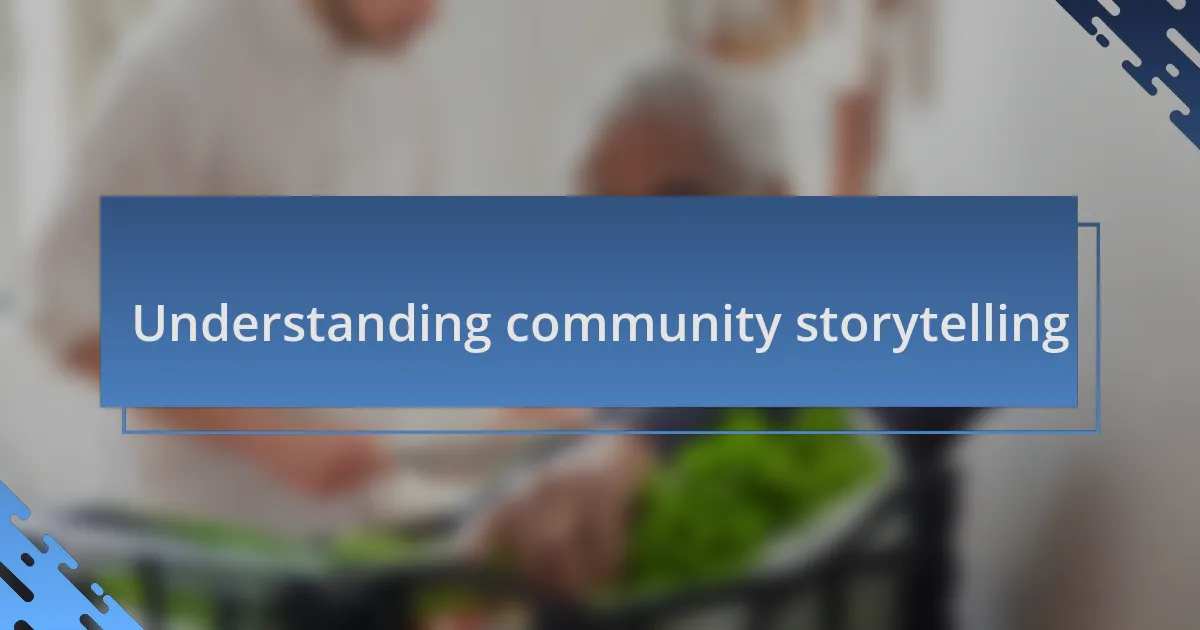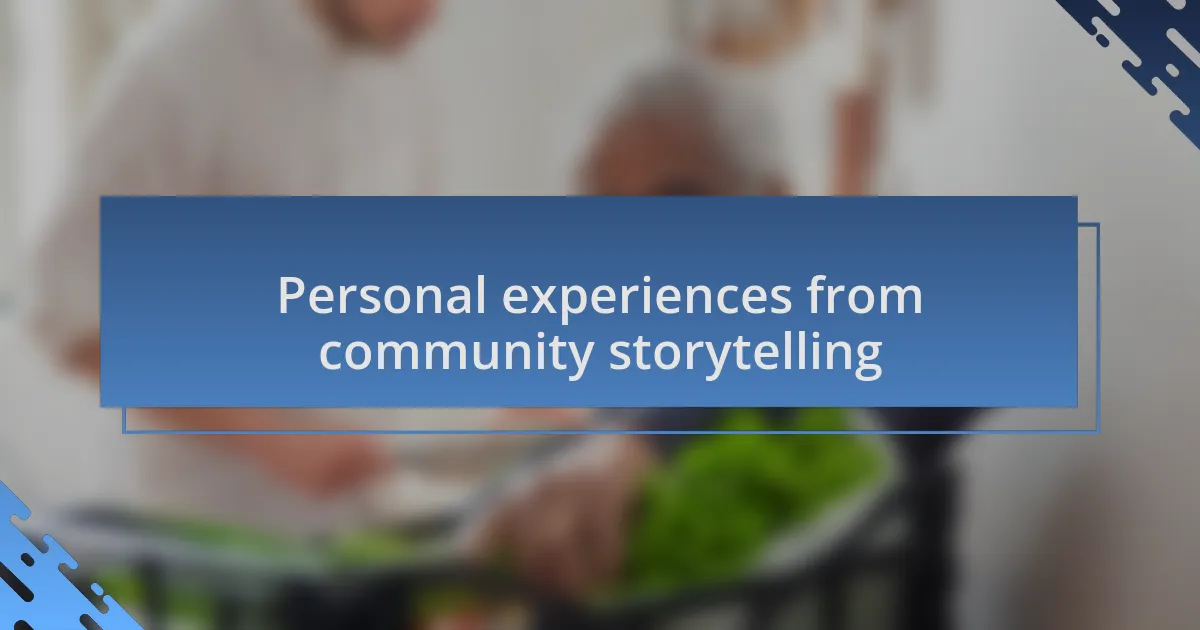Key takeaways:
- Community storytelling highlights the shared human experience, fostering empathy and understanding among individuals from diverse backgrounds.
- Personal narratives in charity settings transform statistics into relatable, powerful accounts, driving empathy and motivating action to support those in need.
- Engagement through storytelling strengthens community bonds, inspiring collaborations that uplift and empower both individuals and the community as a whole.
- Sharing personal experiences, especially those of vulnerability, creates a connection that can shift perspectives and challenge societal stereotypes.

Understanding community storytelling
Community storytelling is more than just sharing tales; it’s about weaving the fabric of a neighborhood through the narratives of its members. I remember a time when a homeless individual shared his journey at a local gathering. His story resonated deeply with everyone present, reminding us that behind every struggle is a person with hopes and dreams, just like ours.
When I think about the impact of these stories, I can’t help but ask myself: how often do we overlook the voices of those who are marginalized? I once facilitated a workshop where participants shared their experiences, and I was genuinely moved by how storytelling fostered understanding and empathy among us. It shed light on the shared human experience, making the invisible visible and bridging gaps between different walks of life.
Each story carries its own weight and significance, inviting listeners to reflect and engage. For instance, hearing a mother recount her struggles with housing insecurity made it clear that these narratives are crucial. They challenge stereotypes and drag the realities of homelessness into the light, compelling us to care and, ultimately, act.

Importance of storytelling in charity
Stories have an unparalleled ability to connect us on a human level, especially in the realm of charity. I once attended a fundraising event where a young woman shared how a local shelter transformed her life. As she spoke, I noticed tears in the eyes of others around me, highlighting how her journey made the issue of homelessness painfully real. Can you imagine the difference it makes when statistics are replaced with a heartbeat?
In my experience, storytelling becomes a powerful advocacy tool. A friend who volunteers with a charity once told me about a man whose story changed her perspective entirely. Hearing how he lost everything in an unexpected downturn made her realize that anyone could find themselves in similar circumstances. This kind of storytelling moves beyond mere sympathy; it inspires action and drives change.
Moreover, storytelling nurtures a sense of community while reinforcing the importance of mutual support. I remember a gathering where individuals shared not just their challenges but also their triumphs. Through their stories, the bonds between us strengthened, transforming strangers into allies. Isn’t it remarkable how one story can ignite compassion and lead to collaborative efforts that could uplift an entire community?

Engaging the community through stories
Engaging the community through storytelling can be a transformative experience. I vividly recall an event where community members shared their personal journeys of overcoming hardships. Their vulnerability opened doors to conversations that deepened our connections and fostered a sense of belonging. How often do we overlook the power of simply sharing our experiences?
One particularly memorable moment for me was when a local artist recounted how her struggle with homelessness inspired her to create a mural depicting hope and resilience. This artwork didn’t just beautify our neighborhood; it told the tales of those who felt invisible. It got me thinking: isn’t art another form of storytelling that can captivate hearts and spread awareness?
In my experience, when we share stories, we invite empathy into our circles. I remember witnessing a local business owner listen attentively to a former resident of a shelter, both of them finding common ground in their narratives. This exchange sparked a partnership that benefited numerous people in our community. Isn’t it amazing how these shared moments can inspire collaboration and meaningful change?

Personal experiences from community storytelling
I once attended a storytelling workshop where a young man shared his journey from homelessness to finding a stable job. His raw honesty left a significant impact on me; it was a reminder of the hurdles that many face silently. How often do we pause to reflect on the strength it takes to share such personal experiences?
Another time, I sat in on a community event where a single mother spoke about the challenges of raising her children while living in a shelter. Her resilience shone through her words, but what struck me most was the collective gasp from the audience as she revealed her fears for her children’s future. In that moment, I realized that her story echoed the fears many of us hold, regardless of our situations. Why is it that a shared vulnerability can unite us more than anything else?
Participating in these storytelling sessions has taught me that every voice has the power to shift perspectives. I recall listening to an elder recount the days when he faced eviction, his voice trembling yet steady. The way he described the feelings of shame and hope resonated deeply with me. It makes me wonder: can we ever fully understand someone’s journey if we don’t take the time to listen?